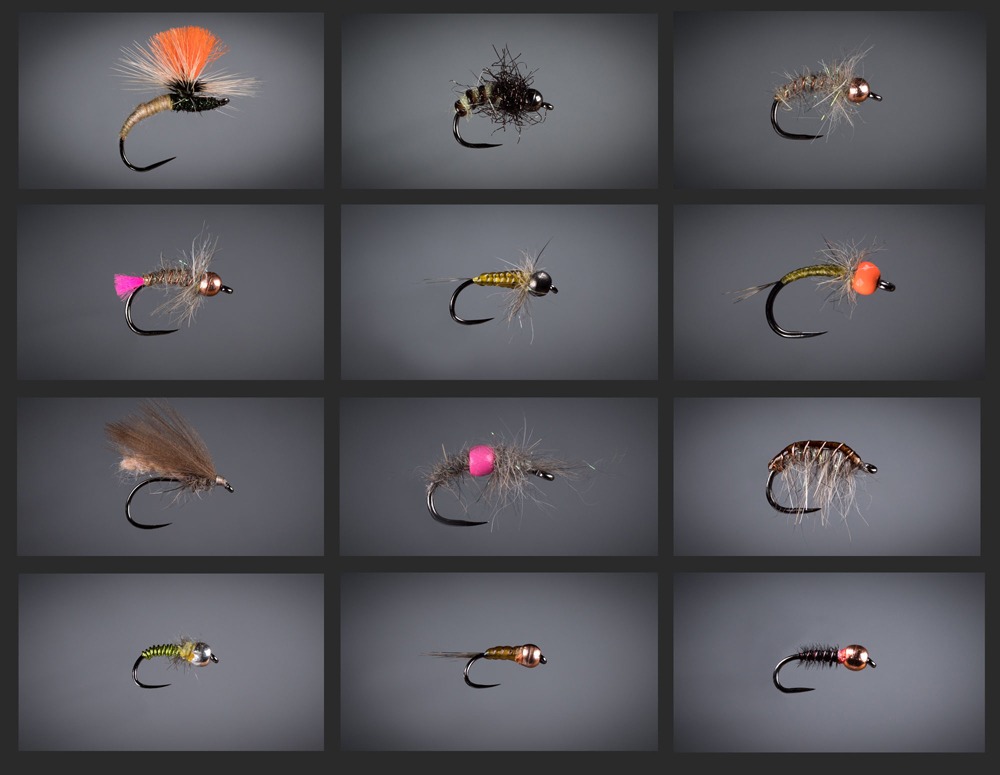
Best Euro Nymphing Flies: Tried and Tested Patterns
When you hit the river to fish in a tight-line style, you want your tactics to be backed by the best Euro Nymphing flies available. If you’ve got real confidence in your flies - then you can relax into focusing on your presentation tactics.
To be ready for different scenarios, you’ll need:
A range of sizes, sink-rates and colors that range from drab to hi-viz or “anti-camouflage” options.
As a curve ball, it is also worth having kick ass dry fly options that you can cast on a French Leader or Mono rig – PLUS, having a go-to utility dry for use in the duo or “dry-dropper” option will really round-out your options.
With these factors in mind – the rest of this article (below) is a proven utility selection of Euro Nymphing flies to arm you for a wide range of conditions for year-round fishing... ↓↓↓
(PS, you will find a complete presentation tactics system for these patterns in my book “The Fly Fishing Bible of Nymphing”)
Of course, being our book, we receive a commission from Amazon for any copies bought using this link - which helps to support this site and our YouTube Channel:
The book comes with over 2 hours of free supporting video material also (and our aim was to make the video content alone worth the asking price of the book - to make it a no-brainer for you).
FD’s Best Euro Nymphing Flies Section 1: Little Skinny Options
It seems sensible to group the patterns according to size – since it’s one of the most important factors involved in whether a fish recognises your fly as food (and how far it is willing to move grab it). One area where quite a few tight-line nymphers miss a trick is with little micro midge (and baetis) patterns.
These can be:
Because people often overlook the effectiveness of smaller nymphs when picturing Euro Nymphing in their mind’s eye, let’s start with some micros…
Essential Option 1: Black Micro Midge
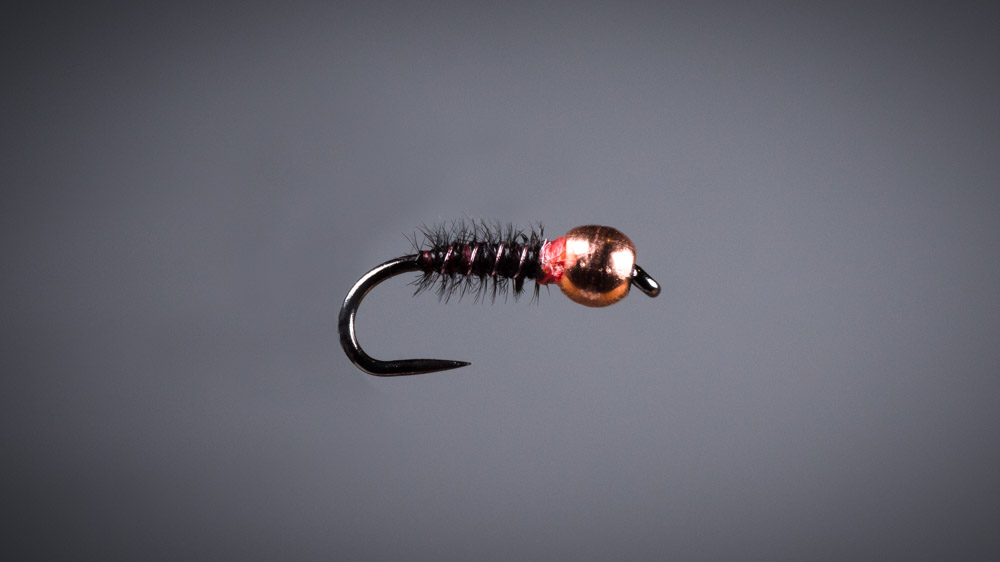
Here’s the materials list and then a tying video for one of my all time most successful “cold/clear water” euro nymphing flies.
Hook:
Max Size 18 - Down to as small as you like!
Thread: Red Fish On UTS
Bead:
2mm down to 1.5mm Tungsten (Copper, Black or Silver)
Body:
Single Strand Black Pheasant Tail
Rib:
Fish On Light Pink Wire (0.09 mm)
Black Micro Midge (one of my best Euro Nymphing flies ) Tying Video:
Micro Baetis: My Absolute Confidence Fly for Tiny Olive Nymphs
Another fly that is easy to look past in my box - but which has proven to be devastatingly effective...

Hook:
Max Size 18 - Down to as small as you like!
Thread: Yellow Fish On UTS
Bead:
2mm down to 1.5mm Tungsten (Copper)
Body: Fish On Ultimate Body Rib (olive) stretched until broken to make it extra thin
Back: Stripe of brown Edding marker pen
Tail:
Coq-de-Leon
PRO TIP: Although JP sold his stake in Fish On - he developed many of the materials used in these flies so that they had the ideal, functional characteristics and quality for his patterns. The current owners do affordable Air Mail shipping to the USA as well as serving their loyal UK customer base.
This one has tails (to cover the small olive mayfly shape) – though it is also good in a tail-less option for olive midges if chironomids of that color happen to be abundant. The medium density of the dressing means this nymph sinks and drifts a bit more naturally in medium-paced water than heavier options.
Anti Camouflage: Magic ingredient in many of the best Euro Nymphing Flies
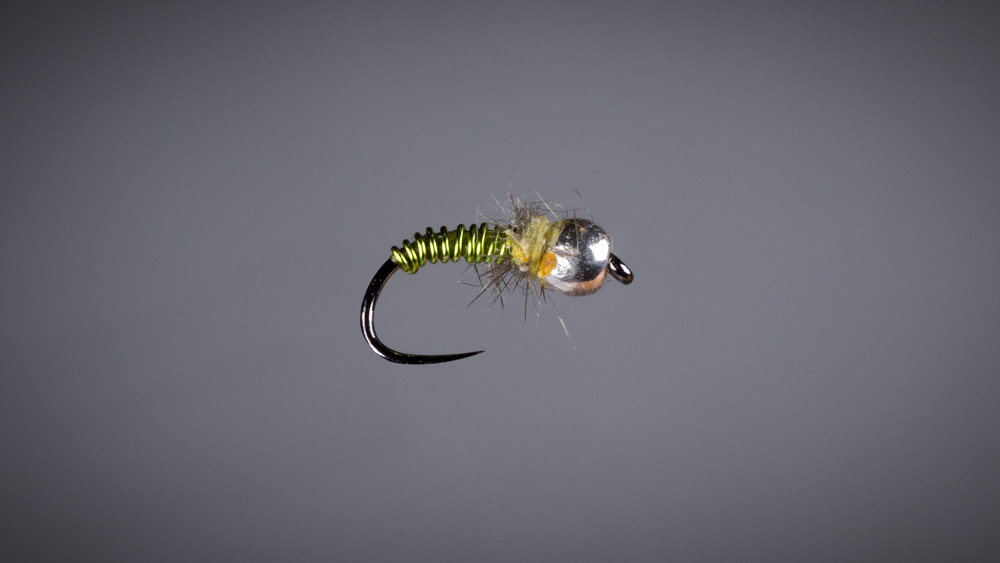
Hook:
Max Size 20 - Down to as small as you like!
Thread: Yellow Fish On UTS
Bead:
2mm down to 1.5mm Tungsten (Silver)
Body: Fish On Chartreuse Wire (0.18mm)
Thorax: Mole
As well as increased density of the (still slim) body, the slight exaggeration of the shiny chartreuse wire may also help fish pick our your imitation from the clouds of naturals. That ability to still look like “food” but stand out from the crowd is the definition of what we call anti camouflage in the book “How to Fool Fish with Simple Flies”.
Again, this is another little fly that can be tied with or without tails.
Best Euro Nymphing Flies: Medium Sized Mouthfuls
When conditions are round about average (normal flow levels, medium clarity, temperatures around the middle of the annual range) then it’s fairly safe to go for medium sized nymphs. You can cover a lot of bases with a small number of patterns that suggest caddis, scud/shrimp or small mayfly nymphs.
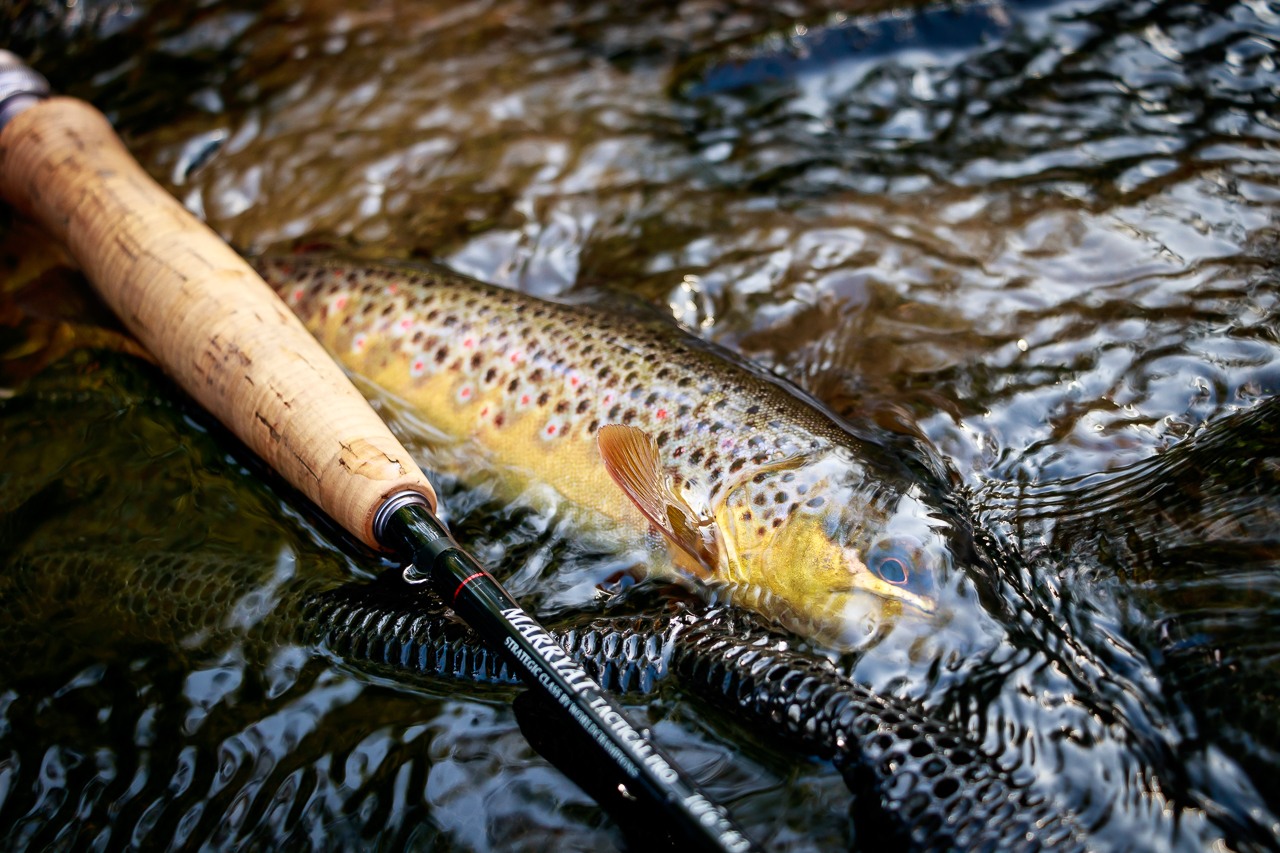
The best Euro nymphing flies tend to be impressionistic – rather than close-copy patterns. It seems likely that there’s two main reasons for this:
Any and all the flies in this selection are basic “template” examples. We’ve shown some color variations – but you should feel free to use your own variations that cover the range from drab to anti-camouflage.
JP’s Easy Bug

Hook:
Size 14 - 10 FIsh On Compound Curved
Thread: Yellow Fish On UTS
Bead:
2.5 mm to 4 mm to suit hook and desired sink rate
Body: Fish On NBC Squirrel Grey
Rib: Fish on wire (0.18 mm)
Just by varying dubbing, rib or bead color you can create a whole range of caddis and even scud imitations with this template. They are also fast and easy to tie – which makes it a bit easier to try them in some riskier spots. A good option all year round.
PS – try a silver bead and silver rib option (Fire!)
Oh, and if you're keen to supercharge your nymph fishing for free...
Winter Special: Easy Hot Spot Shrimp
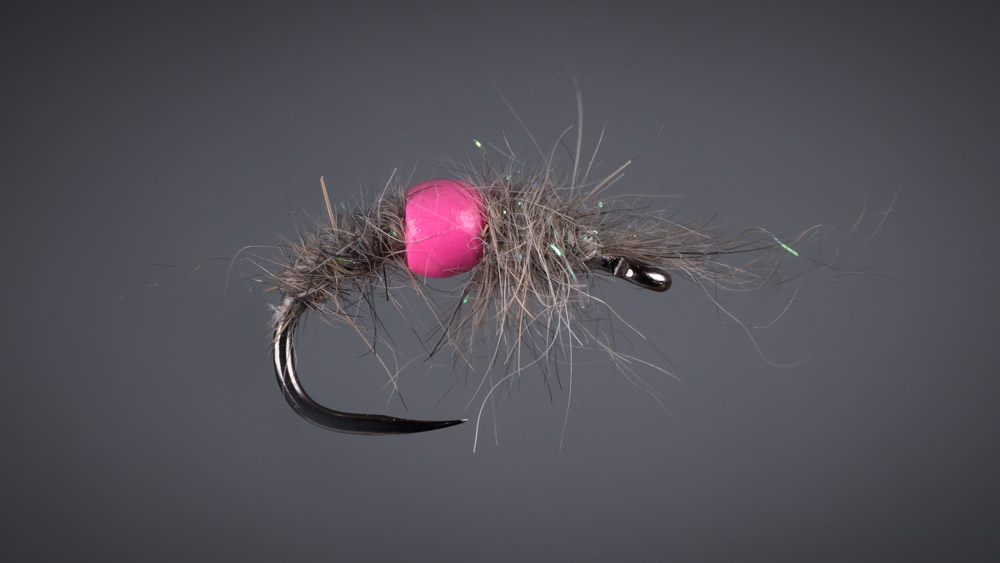
Hook:
Size 14 - 10 FIsh On Compound Curved
Thread: White Fish On UTS
Bead:
2.5 mm to 4 mm to suit hook and desired sink rate
Body: Fish On NBC Squirrel Grey
PRO-TIP: Don't neglect a pale "chalky" shade of pink bead as well as the hot pink shown in the picture
This one is a great winter fly - and again very easy to tie. In waters that see a lot of angler traffic, it can pay to make your flies just a little different from what everyone else is fishing. Shifting the bead (whether for the profile – or for the change in centre of balance) can be just enough to show the fish a different look.
Freshwater Shrimp/Scud (shellback version)
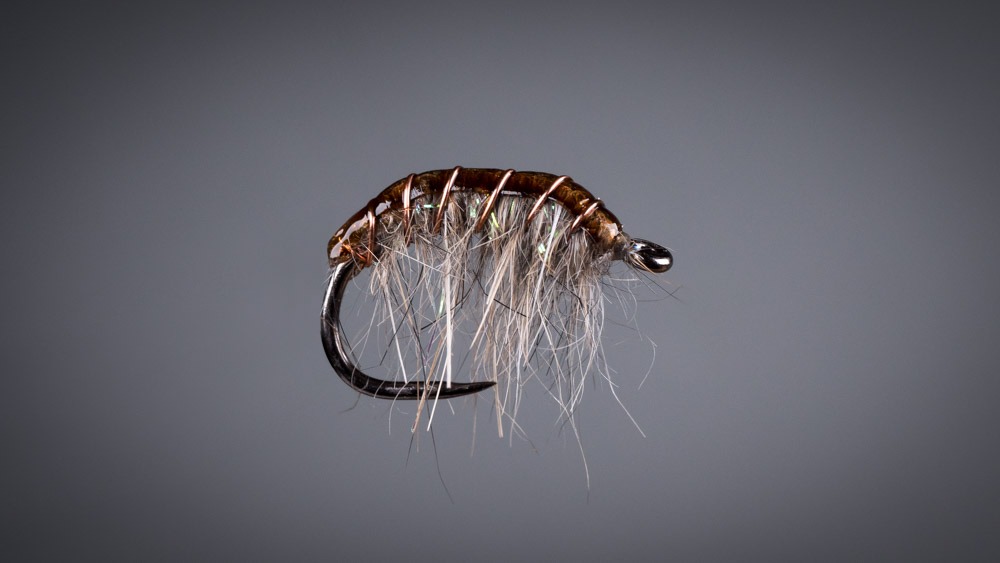
NOTE the "blunt" face profile - rather than a more pointy-headed caddis larva
Hook:
Size 16 - 10 FIsh On Compound Curved
Thread: White Fish On UTS
Weight: Lead wire, tied lengthways along the shank
Body: Fish On NBC Squirrel Grey (or any color variant)
Shellback: Any thin, transparent, flexible shrimp foil
3-D Color Effect: Any dark shade of Edding pen, with paler yellows or orange central stripe to dissolve the dark background shade
Rib: Wire or 4x tippet mono
Remember to seal over the shellback with clear UV Resin or Hard as Nails
Of all patterns in this selection of Euro Nymphing flies, this has the most shared DNA with traditional shell back Czech nymph patterns.
The blunt face profile is the main departure from most of those original Czech-style patterns. However, the dubbing and shellback tying techniques are stuff I directly learned in the Czech Republic from Jiri Klima. The nymph - and other color variants using slightly modified materials, is particularly good in limestone streams (year-round). It's also dynamite in any streams after Autumn/Fall when leaf litter enters the water.
Of course, you can also go full "anti camo" mode and opt for hot orange, sunburst or UV pink or even UV violet/pale purple with the same basic template...
JP Caddis Pupa: One of our best Euro nymphing flies for summer

Hook:
Size 12 - 10 FIsh On Compound Curved
Thread: Yellow Fish On UTS
Bead: 3 mm to 3.5 mm Tungsten
Body: Fish On NBC Dub Pale Green
Rib: Fish On Ultimate Body Rib, Dark Brown/Round Fine
Thorax: Fish On Peacock Bronze Peacock Shimmer Dub
Optional Hackle: Partridge
As well as the version shown in the video, tying this one with a soft game hackle such as grey or brown partridge, also makes a really kick-ass pattern. Fish will move quite a long way off station for this fly when the temperatures are a bit warmer. It is also a nymph that works very well when actively manipulated (as well as drifted naturally).
Juicy Olive Nymph
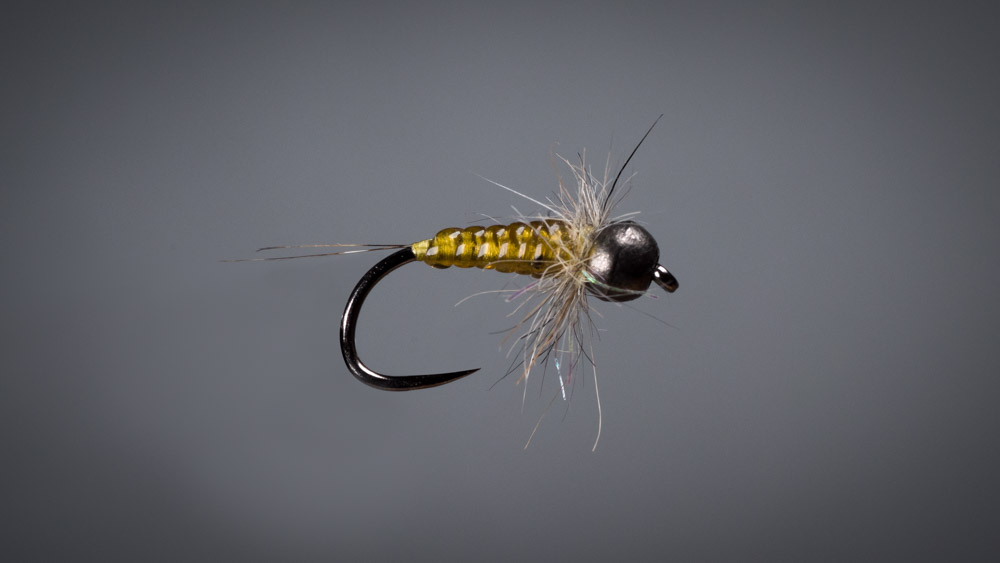
Hook:
Size 16 Fish On Wet 'n' Dry
Thread: Yellow Fish On UTS
Bead: 2 mm Tungsten
Body: Fish On Ultimate Body Rib (D-Section)
Thorax: Fish On NBC Dub Squirrel Grey
Tails: Coq-de-Leon
Tied to similar sizes and proportions/outline to the ever-popular Frenchie nymph (see bonus example below), the body material gives an appealing translucency and overall impression of life. Whenever there is increased activity from medium to larger-sized olive mayfly nymphs, this is a great pattern to include on your cast.
Frenchie Nymph (Bonus fly)
I don’t think I need to include a tying recipe for this one since all you need to do is choose your own color combinations, rib and tail materials and then dub the body shape to the profile shown below. These days, some form(s) of Frenchie nymph would appear in almost everyone’s best Euro Nymphing flies list.
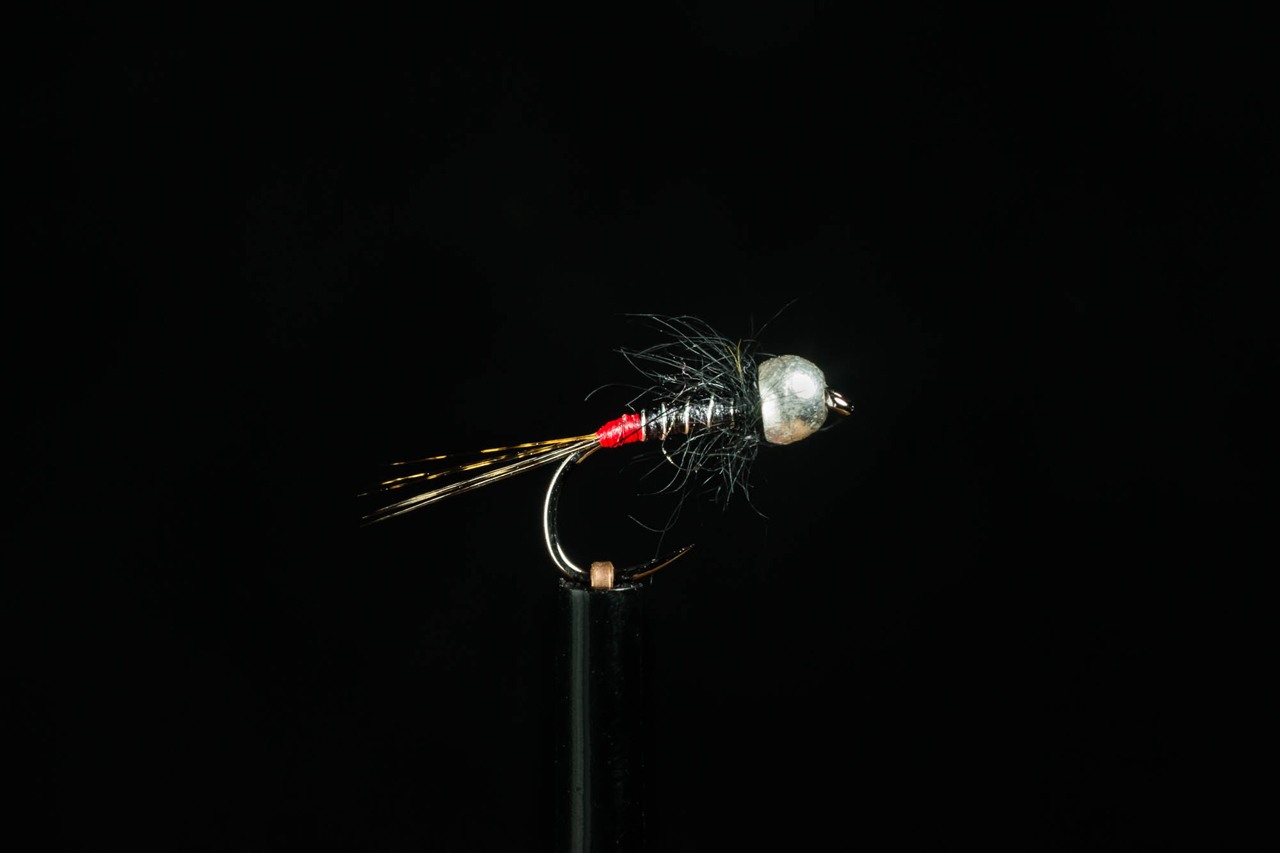
You can very effectively tie a pheasant tail nymph to this profile – with a range of different hot-spot dubbed thorax and tungsten bead color choices. It’s perfectly possible to fill an entire nymphing box with Frenchies – and they do a great job at covering small mayfly and small stonefly nymph impressions.
Black and red is a classic combo (as is pheasant tail body, silver rib, black thorax and pale pink bead head) – though I’ve also seen some great results with a deep blue body and red butt.
JP Tag Nymph
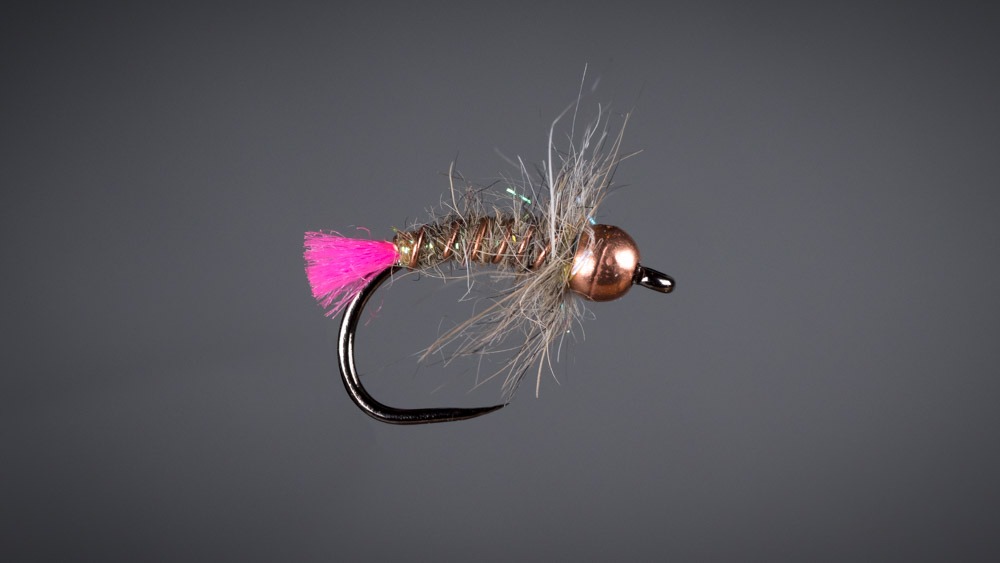
Hook:
Size 14 - 10 Fish On Compound Curved
Thread: White Fish On UTS
Bead: 2.5 mm to 4 mm Tungsten (copper, silver, black or natural tungsten grey
Body: NBC Dub (all colors!!) or Dark shades of Shimmer Dub
Dubbing "Hackle": Fish On NBC Dub (color to suit)
Tail: Glo-brite Floss (common options include pink, orange, green or even traditional red
Rib: Fish On Wire (0.18mm)
PRO-TIP: Try a Peacock Green Shimmer Dub Abdomen, Red Wire Rib, Purple Shimmer Dub Thorax and Squirrel Grey NBC "hackle" and a red tag with silver bead head...
These patterns, probably above all others in this article, run with the idea of taking a simple template and then customising it as you wish. Using a slightly straighter-bodied version of the easy bug leaves room to create controllable anti-camouflage with a tag.
By varying the intensity and contrast of the tag and body colors, you can create dramatic or more subtle ways to stand out from the crowd. For instance, a dark synthetic “peacock” dubbing body, small red tag, red wire rib and purple “shimmer” thorax and picked out dubbing “hackle” makes a crazy mix of shades that fish seem to love (see "Pro Tip" above).
The basic tan body with silver rib and then either orange, pink or green tags (with a silver bead head) gives an effective range of nymphs. Do the same with black body versions and, again, you can quickly fill a leaf in a fly box with proven “confidence” patterns. Again, the power of these flies is in the ability to suggest (impressionistically) a range of prey items on the trout, grayling and char menu throughout the year.
JP’s Skinny Olive

Hook:
Size 16 Fish On Compound Curved
Thread: Yellow Fish On UTS
Bead: 2 mm Tungsten (full color range from drab to hi viz)
Body: Fish On UTS Yellow
Thorax: Fish On NBC Dub Squirrel Grey
Tails: Coq-de-Leon
In clear or hard-fished water, going much slimmer with the body can put the odds in your favour. Again, it’s your job to turn up or tone down the bead color to suit the conditions.
Sometimes you need a bit more anti camouflage to draw attention (where the body profile can “close the deal” by matching a particular prey profile). Or, the strong color itself might be enough to trigger a reflexive feeding response.
On the other hand there will definitely be days where a raw tungsten/gun metal grey is needed for spooky fish in spooky water.
Quirky Utility Flies
You might think it’s weird to include dry fly patterns in a selection of best Euro Nymphing flies – but there’s a couple of strong reasons to do so. First of all, never underestimate the effectiveness of presenting a single dry fly on a traditional French leader (or mono rig). These leaders can be created specifically to turn over a dry fly – and then to have all or most of the leader held off the water.
That’s incredible for drag free drifts – as well as only ever having the dry fly (and no other distractions) land on the water. That delicacy of presentation can often be the key to unlocking difficult trout and grayling feeding on the surface.
Secondly, fishing the dry dropper or duo technique on a French leader can be a great way to achieve good straight line drifts while casting at 90 degrees across the flow. To do that, you’ll need a utility dry fly to deliver your nymph. The hi-viz wing post klink is ideal in that capacity.
One of my all time most dependable dry caddis patterns
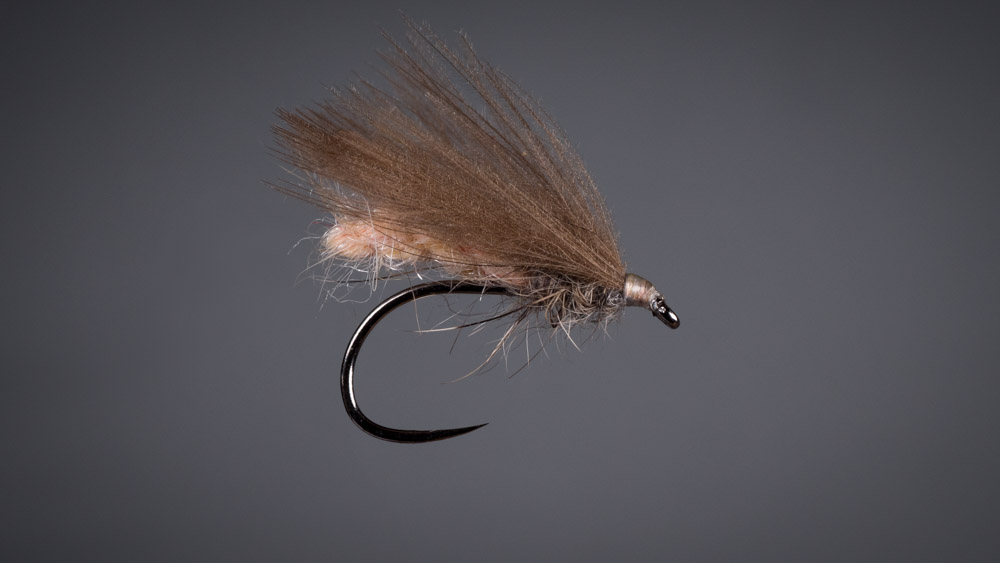
Hook:
Size 16 - 10 Fish On Wet 'n' Dry
Thread: White Fish On UTS
Wing: 4 CDC Feathers
Detatched Body: Furled dubbing or yarn
Thorax: Grey Squirrel with plenty of guard hairs for legs
Easy to tie and extremely effective – kind of the fire and forget missile of dry caddis patterns…
Hi viz Klinkhåmer Special (with a pink wing post this is the Pinkhåmer)
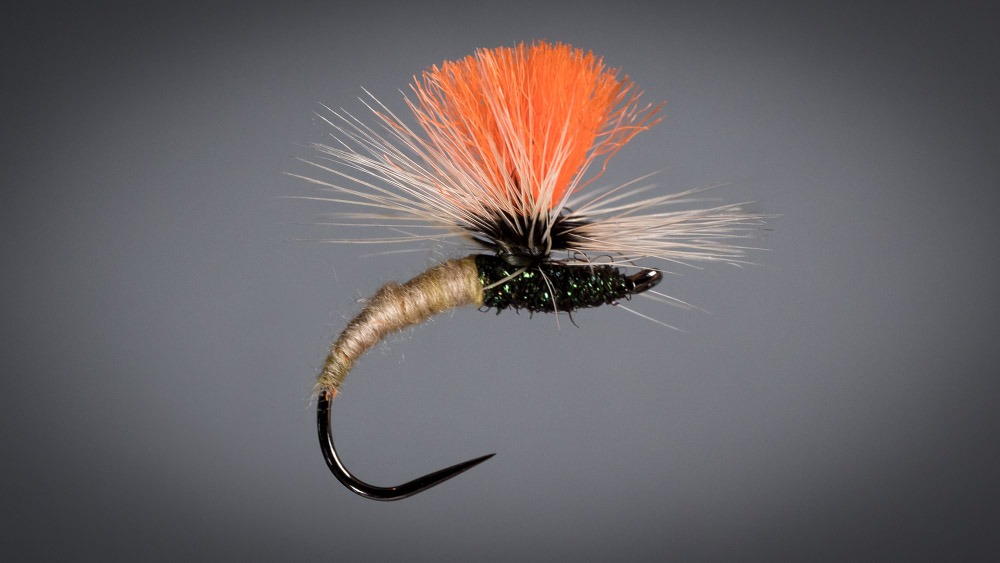
Hook:
Size 12 - 10 Fish On Emerger Hook
Thread: White Fish On UTS
Wingpost: Fish On Ultra Dry Yarn
Hackle: Badger Cock Hackle
Body: Fish On NBC light tan
Thorax: Fish On Shimmer Dub, Peacock Green
Staying fairly true to the original intent as a “big mouthful to pull fish up from depth”; this is best tied fairly large and sizes 12 to 10 (or even an 8 in a similar hook shape) are absolutely appropriate.
Best Euro Nymphing Flies Round-up
OK, so remember to treat all the flies in this selection as templates and create a range of color combinations that vary from drab to vivid. Again, the full strategy for designing and applying those variations is explained in “How to Fool Fish with Simple Flies” – available on Amazon as well as on the direct link above.
I also think you're missing out if you skip on the Fly Fishing Bible of Nymphing with its supporting video material to - but that's just me!
In the "Nymphing Bible", for instance, there are:
More tactics which use ultra heavy (cast lead) anchor flies, as well as the why/how/when to use Perdigon and Ceramic nymphs...
plus a ton more stuff on sighters, French leader recipes (with full step-by-step video demos), Spanish Nymphing, Nymph-au-fil, Sempe nymphing plus Polish, Czech, Trio, Duo, Ladder Leader Nymphing, Streamers on a French leader and a bunch of stories & lessons from international competitors across the decades.
Oh, and the easy biological method for what flies to choose (and how to present them) depending on the season.
Signed copies (with instant access to the supporting video material while you await delivery) available direct from us on the link below:
Please feel free to add your comments or ask your question below...
Paul
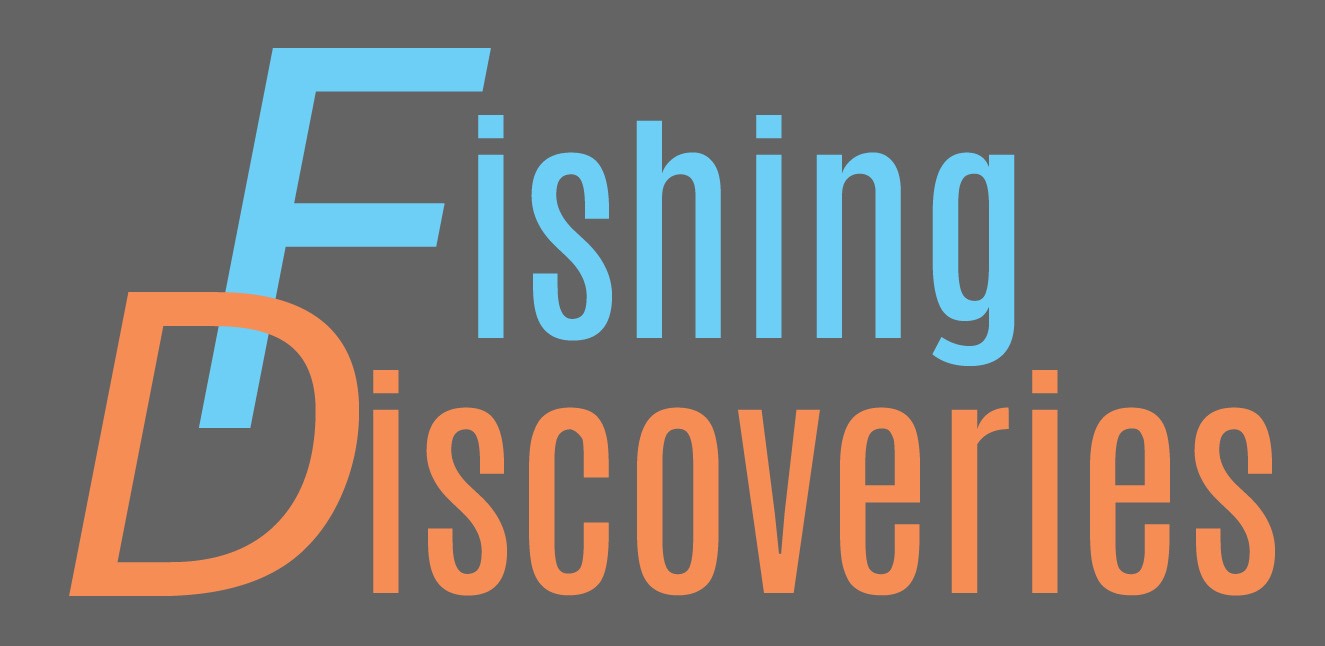

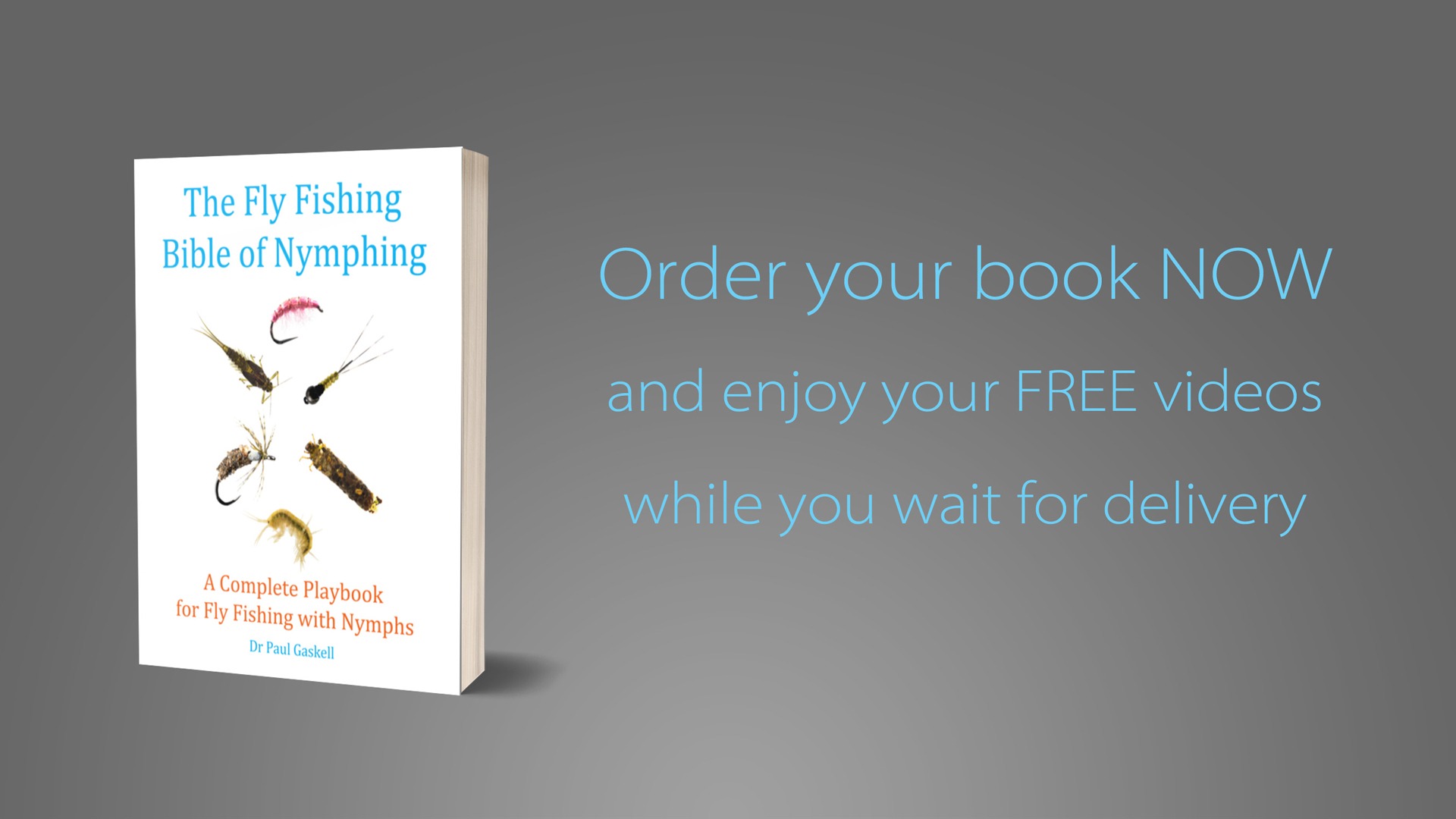
[…] If you want to see more tried and tested fishing flies – here’s a dozen more euro nymphing patterns: https://fishingdiscoveries.com/best-euro-nymphing-flies/ […]
[…] Best Euro Nymphing Flies […]
Just re-reading this nymphing bible again ready for the new season. It really does a terrific job of explaining the minutiae and the reasoning behind the different strands of modern nymphing methods, and the diagrams and photos are very clear.
Well that is truly incredibly kind of you Kerry – thank you for taking time out to post that up; I really appreciate it.
Paul